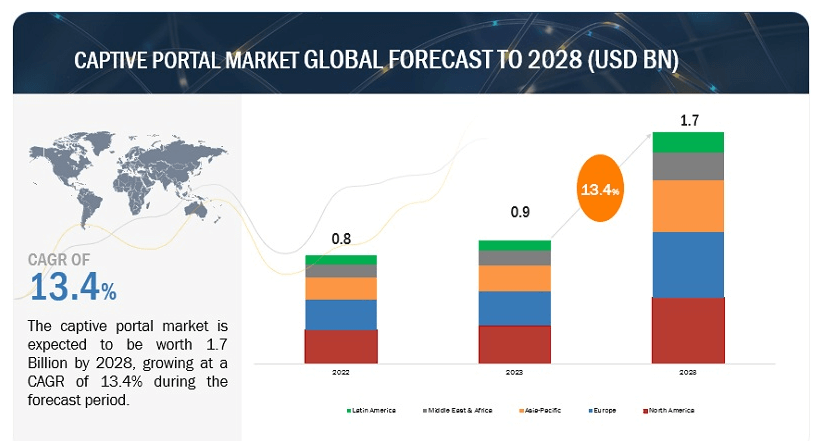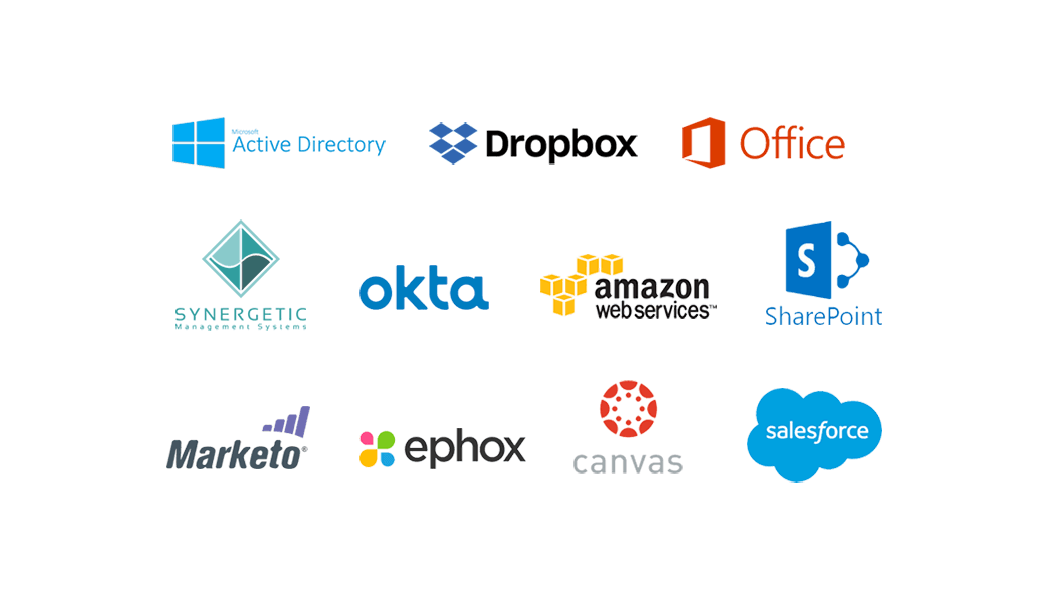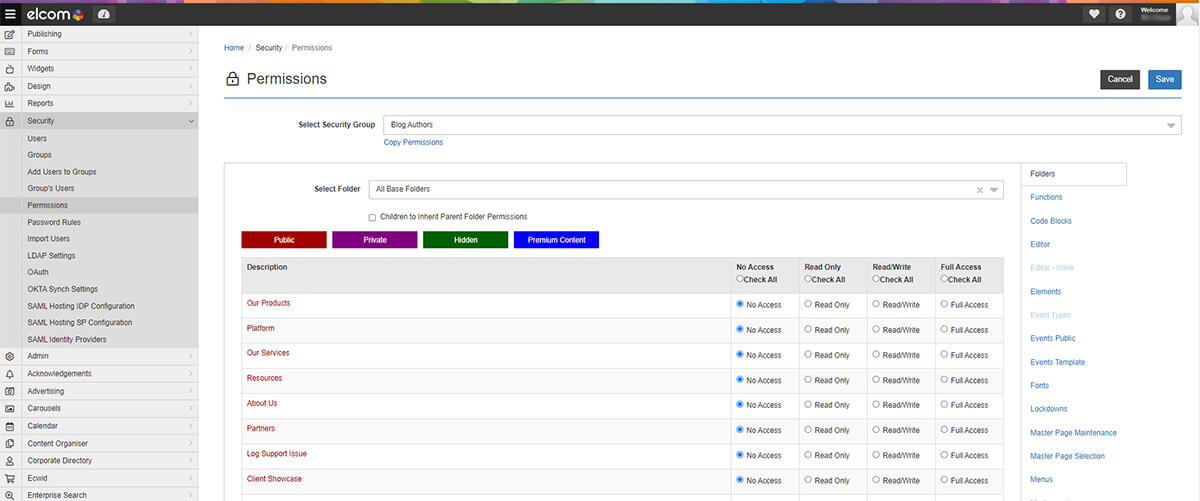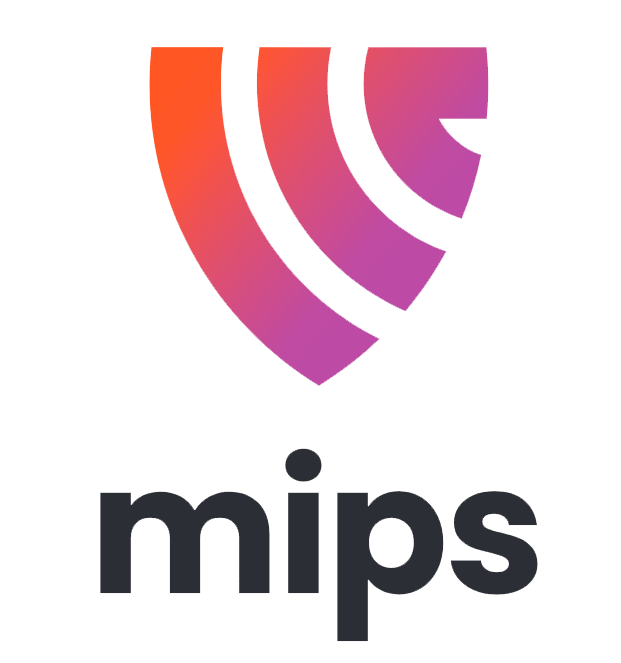Let's get started
Enterprise portals can take many forms, but the common element between these is that it acts as a gateway, integrating information, people, and processes across organisational boundaries.
In this guide, we will delve into the world of enterprise portals, exploring what is an enterprise portal, their key features and benefits, and why they are an indispensable tool for businesses looking to thrive in the digital age.
Let's first understand what a portal is
Chapter 01
What is an Enterprise Portal?
An enterprise portal presents information from diverse sources in a unified way and provides users with the most relevant information for their context. These users are external to your organisation. Think customers, partners and suppliers.
This is not to be confused with an intranet, which shares common features and functionalities. Unlike a portal, an intranet, is a centralised hub of information and resources for internal employees. However, both are built on enterprise content management systems.
The core idea behind an enterprise portal is to provide a single point of access to various applications and services. This centralisation is not just about bringing together different software solutions but also about creating a cohesive, user-friendly interface that enhances productivity and collaboration.
For instance, a well-designed enterprise portal can integrate with CRM systems, ERP systems, HR management tools, and various other business applications, offering a seamless experience to its users.
In addition, they can be tailored to meet the specific needs of a business, whether it's a small enterprise or a large corporation. This customisation extends not only to the technical aspects, such as integration with existing systems and data analytics, but also to the user experience, including branding, layout, and content personalisation.
So how do you create a portal that will be used to its full potential?
Let’s start by breaking down the importance of portals, and then move onto the best practices for implementing the right system and structure.
Chapter 02
The Importance of Modern Enterprise Portals
Modern enterprise portals have become an indispensable tool for businesses wanting to streamline operations, enhance collaboration and communication, boost stakeholder engagement, provide mobile access, and integrate seamlessly with third-party apps.
According to a report by MarketsandMarkets, the global portal market is anticipated to expend at a compound annual growth rate of 13.4% from 2023 to 2028. This growth is driven by the increasing demand for businesses to provide a unified access point to information and applications.

Source: MarketsandMarkets
Streamlining Operations
One of the primary benefits of an enterprise portal is its ability to streamline business operations.
These enterprise information portals provide a centralised platform for accessing various business applications and tools, these portals reduce complexity and improve efficiency. They enable stakeholders to find information quickly, automate routine tasks, and manage workflows more effectively.
This consolidation of resources not only saves time but also reduces the likelihood of errors, leading to more streamlined and efficient business processes.
Communication and Engagement
Stakeholder engagement is critical to the success of any organisation.
Enterprise portals provide a platform where users can connect with and engage with each other, regardless of their physical location.
Features such as news, discussion forums, shared workspaces, and instant messaging facilitate seamless communication, ensuring that users are always connected and can work together with your organisation more effectively.
Mobile Access
With the increase in remote working and the need for on-the-go access to information, mobile access has become a crucial feature of modern enterprise portals.
These portals are designed to be mobile-responsive, allowing users to access information and perform tasks from anywhere, at any time, using their mobile devices.
This flexibility is essential for businesses looking to stay competitive in a fast-paced, mobile-first world.
Ability to Integrate with Third-Party Apps
The ability to integrate with third-party apps is another significant advantage of modern enterprise portals.
This feature allows businesses to extend the functionality of their portal by integrating with various external applications and systems, such as CRM, ERP, and social media platforms.
This integration capability not only enhances the portal's functionality but also ensures that businesses can leverage their existing technology investments effectively.

A great portal enables organisations to delivered relevant and immersive experiences to their audience.
"Captive portals enable businesses to create a branded and immersive user experience by incorporating company logos, colours, and messaging. Furthermore, captive portals offer the advantage of delivering targeted messages to users."
― Markets and Markets Report
But what can you actually use a portal for?
Chapter 03
Enterprise Portal Use Cases
Now that you understand the importance of enterprise portals, let's look at some use cases to see how it can be applied in your own organisation.
We'll delve further into these offering practical advice on how to leverage these platforms for optimal business performance.
1. Supplier Portal: Streamlining Supply Chain Management
Key Benefits:
- Enhanced Communication: A supplier portal facilitates real-time communication between your business and its suppliers, reducing misunderstandings and delays.
- Improved Efficiency: Automate order processing, invoicing, and tracking, leading to a more efficient supply chain.
- Data Centralisation: Centralise critical data, making it easier to manage and analyse supplier information and performance.
Practical Tip: Implement features like automated notifications and real-time dashboards to keep both parties informed about order statuses, inventory levels, and delivery schedules.
2. Partner/Vendor Portal: Fostering Collaborative Relationships
Key Benefits:
- Streamlined Collaboration: Share resources, marketing materials, and product information easily with partners and vendors
- Enhanced Transparency: Real-time tracking of joint ventures and projects enhances trust and transparency
- Efficient Resource Management: Centralise all partner-related documents and data for easy access and management.
Practical Tip: Use customisable dashboards for different partners, allowing them to access relevant information and tools tailored to their specific needs and roles.
3. Customer Portal: Enhancing Customer Experience
Key Benefits:
- Personalised Experience: Offer customers a personalised dashboard with their transaction history, support tickets, and relevant content.
- Self-Service: Enable customers to find answers to their queries, track orders, and manage their accounts without needing to contact customer service.
- Feedback Loop: Use the portal to gather customer feedback, which is crucial for continuous improvement.
Practical Tip: Integrate AI-driven chatbots to provide instant support and guidance, improving customer satisfaction.
MarketsandMarkets also found that consumer facing portals, specifically within transport and travel, and hospitality and leisure, are in high demand. Not surprisingly, given the millions of consumers around the world looking for services within these industries.
4. Member Portal: Building Community Engagement
Key Benefits:
- Community Building: Create a space for members to connect, discuss, and share ideas or resources.
- Event Management: Manage registrations, payments, and updates for events or workshops.
- Content Access: Provide exclusive access to resources, training materials, or forums.
Practical Tip: Regularly update content and engage with members through forums and surveys to keep the community active and involved.
5. Employee Portal: Streamlining Internal Processes
Key Benefits:
- Centralised Information: Keep all necessary information, such as policies, procedures, and announcements, in one place.
- Enhanced Collaboration: Facilitate collaboration across departments and locations.
- Employee Self-Service: Empower employees with self-service options for leave applications, expense claims, and personal data updates.
Practical Tip: Incorporate social features like internal blogs, forums, and team spaces to foster a sense of community and collaboration among employees.
6. Knowledge Portal: Centralising Information Access
Key Benefits:
- Knowledge Sharing: Facilitate the sharing of insights, best practices, and expertise across the organisation.
- Improved Decision Making: Provide easy access to data and information, aiding in informed decision-making.
- Continuous Learning: Encourage continuous professional development through access to training materials and knowledge resources.
Practical Tip: Regularly update the portal with the latest research, case studies, and industry news to keep the content relevant and valuable.
Case Study
 The Problem
The Problem
Most processes including document management were still very manual and paper based. Hino wanted to build several solutions including an intranet, extranet, portal, and web application interface.
The Solution
Hino Central has become the central portal not just for staff members to access the intranet, but for everyone who does business with Hino Australia. The cost and time savings are huge. Buying a new system or application for each process a department wants to automate, paying to customise it to what the business needs and then paying subscription fees can make it expensive. Now the team can build it as a custom function on Hino Central without spending a cent.
Read more
The sky's the limit
Enterprise portals are more than just digital platforms; they are dynamic ecosystems that can transform how businesses interact with suppliers, partners, customers, members, and employees. By understanding and leveraging the specific use cases of these portals, organisations can significantly enhance their operational efficiency, communication, and overall business performance.
Chapter 04
Essential Features of Enterprise Portals
Understanding what an enterprise portal is and recognising its importance is pivotal for any organisation looking to enhance its digital strategy.
As part of the wider framework for web portal best practices, exploring the enterprise portal features and capabilities available is a key step.
- User-Friendly Interface. A hallmark of an effective enterprise portal is its user-friendly interface. It should offer an intuitive and engaging user experience, akin to the best consumer websites. This ease of use encourages adoption and regular use among users. This ease of use encourages adoption and regular use among users.
- Personalisation. Personalisation is key in making employees feel connected and engaged. An enterprise portal that allows users to customise their dashboard and content according to their preferences and job roles can significantly enhance the user experience.
- Robust Search Functionality. With the vast amount of information circulating within an organisation, robust search functionality becomes a necessity. An effective enterprise portal should offer powerful search capabilities, enabling users to quickly and easily find the information they need, thereby saving time and increasing productivity.
- Mobile Responsiveness. In today's mobile-first world, having a mobile-responsive enterprise portal is non-negotiable. Employees and customers alike should be able to access the portal from any device, ensuring constant connectivity and flexibility, whether they are in the office, working remotely, or on the go.
- Integration Capabilities. One of the most significant features of an enterprise portal is its ability to integrate with various internal and external systems and applications. This integration is crucial for streamlining business processes and providing a unified experience. Whether it's integrating with CRM systems or internal communication tools, seamless integration enhances efficiency and effectiveness.
- Collaboration Tools. Collaboration tools are the backbone of portal implementation. Features such as forums, chat rooms, and collaborative workspaces enable organisations to stay connected with stakeholders, share ideas, and foster a sense of community. These tools are also beneficial in a CXP context, where customer feedback and collaborative customer service can be facilitated.
- Content Management. Effective content management is essential in an enterprise portal. The ability to easily create, manage, and distribute content allows for efficient communication and information dissemination within an organisation. This feature is equally important for CXPs, where up-to-date and relevant content can significantly impact customer engagement and satisfaction.
- Analytics and Reporting. Finally, analytics and reporting capabilities are crucial for continuously improving the portal experience. Understanding how employees and customers interact with the portal can provide valuable insights into areas for improvement, helping to drive strategic decisions and enhance overall effectiveness.
- Security and Compliance. In an age where data breaches are commonplace, ensuring the security and compliance of an enterprise portal is paramount. Features such as role-based access control, data encryption, and compliance with regulatory standards are essential to protect sensitive information and maintain trust among users. In an age where data breaches are commonplace, ensuring the security and compliance of an enterprise portal is paramount. Features such as role-based access control, data encryption, and compliance with regulatory standards are essential to protect sensitive information and maintain trust among users.

Free Resource
We take you through the entire process of successfully choosing and implementing a new portal solution that truly provides value for your audience. BONUS: Detailed comparison and evaluation checklist.
Get your free guide and spreadsheet
Keep in mind that the features and functionality required will depend on your own unique needs. You might, for example, realise you need a learning management system or events manager. Always start your search with understanding your own users and the pain points you're trying to solve for!
Chapter 05
Choosing the Right Enterprise Portal Solution
Selecting the right enterprise portal solution is a critical decision for any organisation looking to ensure it's enterprise portal strategy succeeds.
- Assess Your Business Needs. Before diving into the sea of available enterprise portal solutions, it's crucial to have a clear understanding of your business needs. This should be the first stage of your enterprise portal strategy.
Think about what specific problems are you trying to solve? Are you looking to improve internal communication, enhance collaboration, or streamline business processes?
Understanding your objectives will help you identify the features you need in an enterprise portal.
- User Experience is Key. The success of an enterprise portal largely depends on how easily employees can navigate and use it. Look for a solution that offers a user-friendly interface with intuitive navigation.
A good user experience will encourage adoption and regular use, making the investment worthwhile.
A great portal design is one you barely notice – because things simply work the way they’re supposed to.
- Integration Capabilities. The enterprise portal you choose should seamlessly integrate with your existing systems – be it your CRM, ERP, HR software, or any other business application.
Effective integration on the digital experience platform you choose ensures your stakeholders can easily access all the systems needed, reducing complexity and improving efficiency.
- Customisation and Scalability. Every business is unique, and so are its requirements.
A one-size-fits-all approach doesn't work when it comes to enterprise portals. Look for a platform to build your portal on that offers customisation options to cater to your specific business needs.
Additionally, consider the scalability of the portal. As your business grows, your portal should be able to scale accordingly.
- Security and Compliance. With the increasing frequency of cyber threats, security cannot be overlooked. Ensure that the platform you choose has robust security features to protect sensitive business information.
Compliance with relevant data protection regulations is also a critical factor to consider.
- Mobile Accessibility. With the rise of remote working, mobile accessibility has become more important than ever. Your employees should be able to access the portal anytime, anywhere, from any device. A mobile-responsive design is a must-have feature for any modern enterprise portal.
- Support and Training. Implementing an enterprise portal is not just about the technology; it's also about the people who use it.
Ensure that the vendor you choose offers comprehensive support and training services.
Adequate training ensures that your employees can make the most out of the portal, while ongoing support helps in resolving any issues that may arise.
- Vendor Reputation and Reliability. Finally, consider the reputation and reliability of the vendor.
Research their track record, read customer reviews, and understand their approach to customer service.
A reliable vendor should not only offer a robust product but also stand behind it with strong customer support.
Case Study

MIPS saw the value in extending online engagement to facilitate greater support and training to their community of over 50,000 members.
Elcom met the challenge by providing a CMS solution with the core features to unify their external systems and the extensibility to complement our their systems initiatives. Working together, new features were added including the implementation of automated email, SMS alerts and risk education dashboard. Elcom's Training Manager provided an effective platform to deliver MIPS’ initial business needs and a path forward for enhanced development.
Read more
Part of choosing the right enterprise portal solution, also involves avoiding these common challenges below!
Chapter 06
Common Enterprise Portal Implementation Challenges
Understanding these hurdles and preparing strategies to ensure the success of your enterprise portal implementation is crucial.
Let’s explore some common challenges in enterprise portal implementation and how to effectively navigate them.
1. Integration with Existing Systems
One of the primary challenges in implementing an enterprise portal is ensuring seamless integration with existing systems. This process can be complex, especially when dealing with legacy systems or a multitude of disparate applications.
How to Avoid Challenges:
- Start by conducting a thorough audit of your current systems.
- Identify key integration points and potential bottlenecks.
- Choose an enterprise portal that offers flexible integration capabilities. It’s often beneficial to work with a vendor who has experience in integrating a wide range of systems.
2. Data Migration
Migrating data to a new enterprise portal can be a daunting task, particularly if dealing with large volumes of data or ensuring data integrity during the migration process.
How to Avoid Challenges:
Develop a detailed data migration plan. This should include data cleaning, mapping, and testing phases. It’s crucial to maintain data integrity, so consider employing tools or services that specialise in data migration to ensure a smooth transition.
3. Stakeholder Buy-in and Usage
The success of an enterprise portal heavily relies on its adoption by stakeholders. Resistance to change and lack of engagement can lead to portals becoming ghost towns.
How to Avoid Challenges:
Focus on change management and communication from the outset.
Clearly communicate the benefits of the portal to all users. Involve them in the process through feedback sessions and training.
Make the portal user-friendly and relevant to the task they want to perform to encourage regular use.
4. Training and Support Resourcing
A new system requires adequate training and ongoing support. Lack of proper training can lead to underutilisation of the portal, while insufficient support can lead to frustration among users.
How to Avoid Challenges:
Allocate sufficient resources for comprehensive training and ongoing support.
This might include online tutorials, in-person training sessions, and a dedicated support team. Ensure that users feel supported throughout their journey with the portal.
5. Project Management Challenges
Effective project management is key to a successful enterprise portal implementation. Poorly managed projects can lead to delays, cost overruns, and a failure to meet objectives.
How to Avoid Challenges:
Employ robust project management practices.
This includes clear goal-setting, regular progress reviews, risk management, and effective stakeholder communication.
Consider using project management software to keep track of tasks and milestones.
6. Cost Challenges
Cost overruns can be a significant challenge in enterprise portal implementation. This can be due to unexpected technical challenges, scope creep, or underestimating the resources required.
How to Avoid Challenges:
Develop a realistic budget that includes contingencies for unforeseen expenses.
Keep a close eye on the project scope to avoid creep and regularly review the budget against actual expenses.
Transparent communication with your vendor about costs is also crucial.
Free Resource
We take you through the entire process of successfully choosing and implementing a new portal solution that truly provides value for your audience. BONUS: Detailed comparison and evaluation checklist.
Get your free guide and spreadsheet
Elcom: Your Enterprise Portal Partner
Looking for advice tailored to your unique needs? Feel free to reach out to our experts. The team at Elcom would be happy to provide answers or to arrange a free consultation.
The Elcom team have been building enterprise portals for over 20 years.
From a supplier portal for Target Australia and car dealer portal for Kia Motors, to a student and parent portal for Ascham School - there is no limit to what the Elcom CMS portal solution can do.
Let’s work together